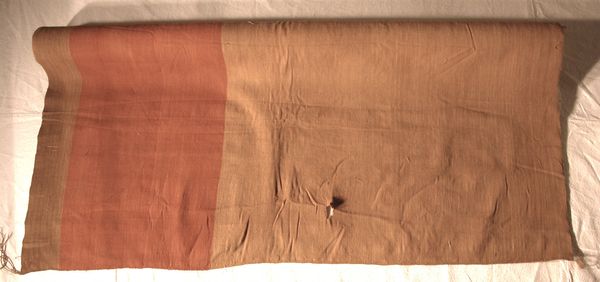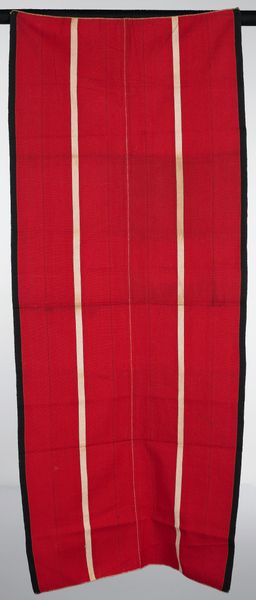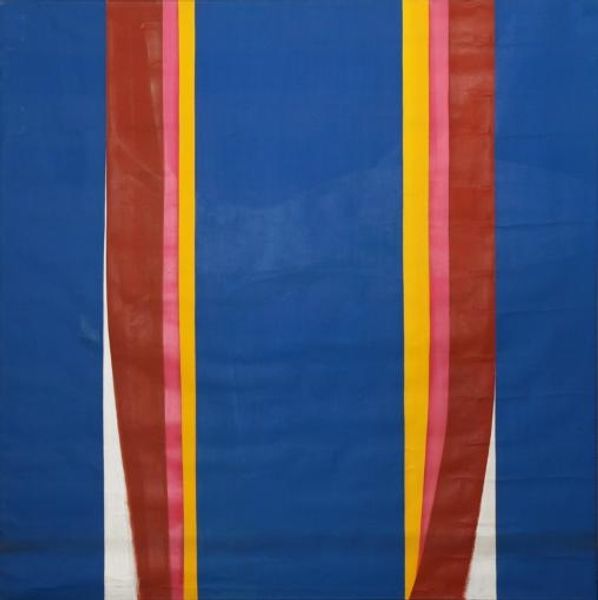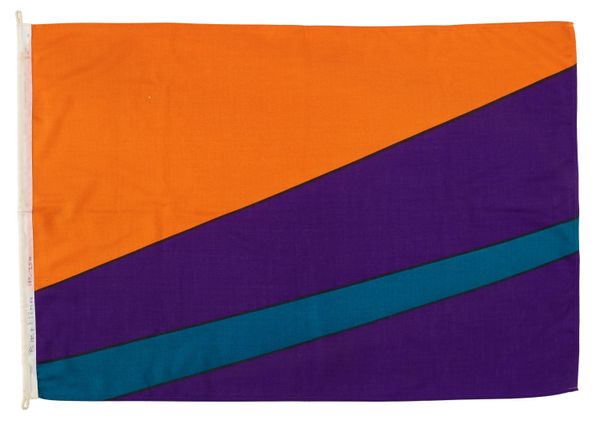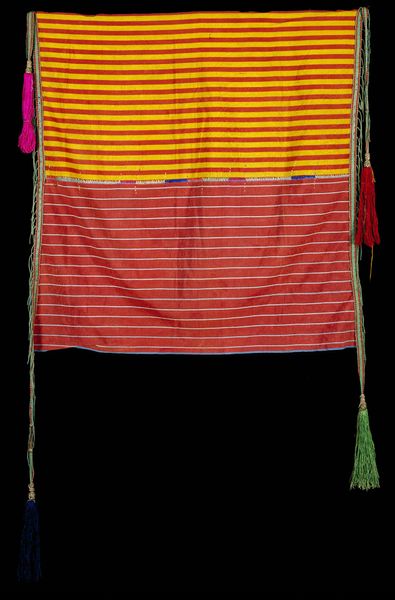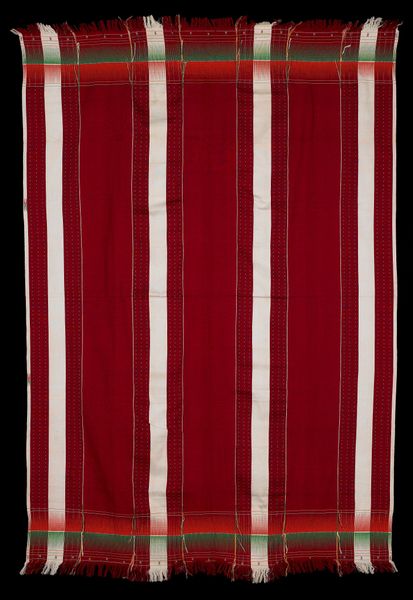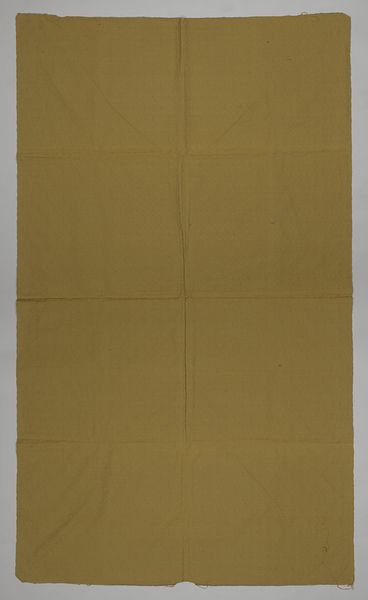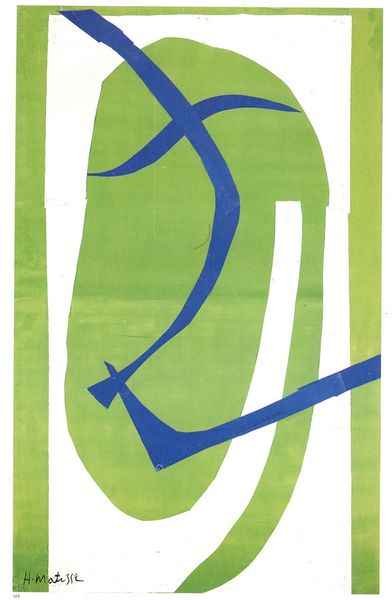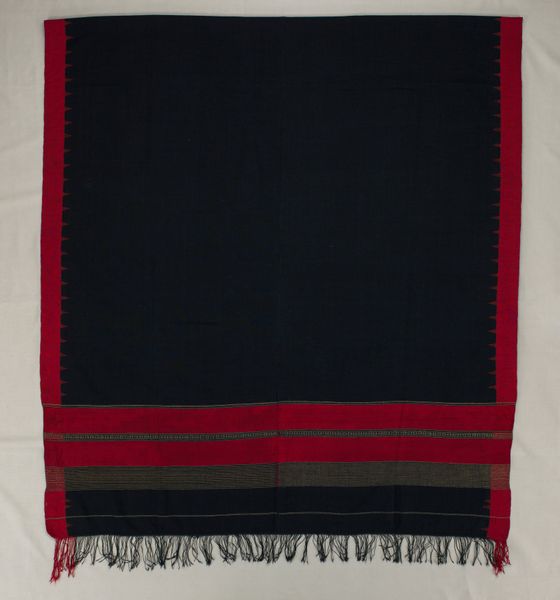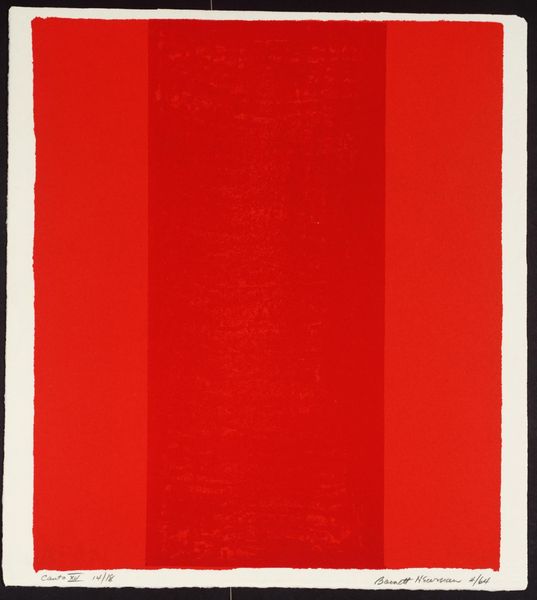
mixed-media, textile, photography
#
mixed-media
#
conceptual-art
#
activist-art
#
postmodernism
#
neo-concrete
#
appropriation
#
textile
#
photography
Copyright: Helio Oiticica,Fair Use
Curator: The work before us, dating from 1968, is entitled *Seja Marginal, Seja Herói,* a mixed-media creation by Hélio Oiticica. Editor: Visually arresting. That high-contrast palette, the stark red and black, it screams urgency. Curator: Indeed. The photograph, screen printed on fabric, features a slain bandit named Cara de Cavalo. Editor: So it’s both textile and photography. I'm drawn to how Oiticica handles positive and negative space; the image feels almost like a stencil, simplifying form down to its essential silhouette against that intensely bold ground. Curator: Cara de Cavalo became a folk hero figure and a counterculture icon in Brazil, representative of standing against the elite establishment. Oiticica deliberately elevates this appropriation, creating an artwork rife with the energy of postmodern activist expression. Editor: I’m seeing how Oiticica manipulates visual syntax, making a radical statement simply with bold hues and concise lettering. Did its placement have meaning to the artist's project? Curator: It functioned not only as art, but also as wearable object. Think of it in activist parades or art installations... It embodies themes of social commentary, of political defiance. "Be Marginal, Be a Hero," as it succinctly urges. Editor: It does demand action. You can’t ignore the visceral impact when stripped down in terms of sheer emotive value—the color itself ignites something, quite apart from the subject depicted, the photographic content. Curator: Which points, I feel, to its powerful cultural longevity and resonance as more than just political art—it’s an exploration into identity, marginalization, even mythology-making within sociopolitical frameworks. Editor: Looking closely now, its activist gesture still carries that sense of immediacy, doesn't it? Like the echo of a call to arms or revolution across time. Curator: Absolutely, it provokes that necessary confrontation even today. A lasting visual document of the social ethos within Brazilian art from the '60s.
Comments
No comments
Be the first to comment and join the conversation on the ultimate creative platform.
